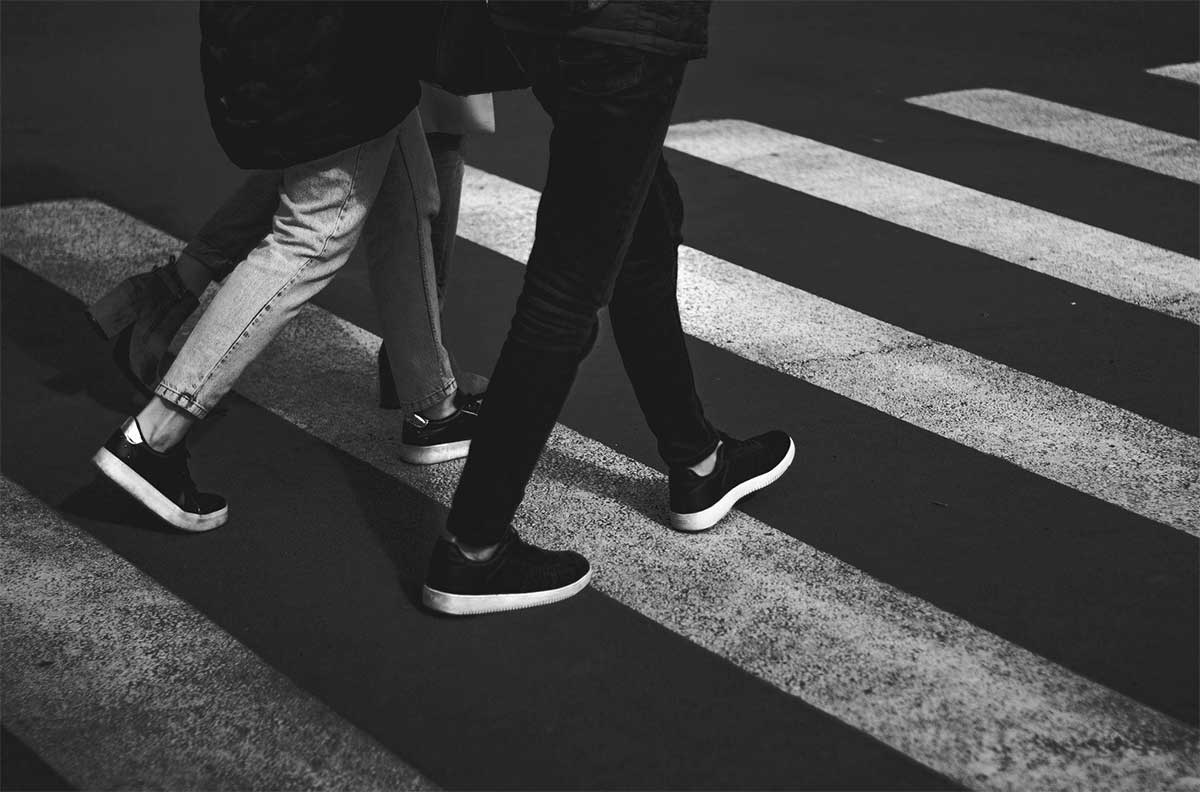Pedestrian accidents are unfortunately quite common, and in many cases, the pedestrians themselves are often found to be at fault. Despite the fact that drivers are expected to exercise caution and attentiveness at all times, pedestrians have a responsibility to ensure their own safety as well as to avoid behaviors that may increase their risk of an accident.
If you or a loved one was involved in a pedestrian accident, contact Slate Stern Law to get legal help. Our Santa Fe pedestrian accident lawyer can help you investigate what caused the accident, determine who is responsible, and explain how you can seek compensation for your damages.
How a Pedestrian Can Cause an Accident
Let’s take a look at the six ways that a pedestrian could be to blame (partially or fully) for causing an accident on the road:
1. Jaywalking
Jaywalking is one of the most common causes of pedestrian accidents. In many urban areas, it is easy to find large groups of pedestrians crossing the road at random points rather than seeking out designated crosswalks. However, doing so puts the pedestrian at risk of being hit by a vehicle that may not be expecting them. To avoid an accident, pedestrians should always cross the road at designated crosswalks and follow traffic signals carefully.
2. Wearing Dark Clothing at Night
A pedestrian who wears dark clothing at night can be very difficult to see, especially if they are walking in a dimly lit area or on a road without street lights. This makes it easier for drivers to miss them and can increase the risk of an accident. When walking at night, pedestrians should wear bright or reflective clothing, and always carry a flashlight.
3. Failing to Look Both Ways Before Crossing on an Uncontrolled Crosswalk
Even though pedestrians have the right of way on uncontrolled crosswalks (e.g., intersections without traffic signals) under New Mexico Statutes § 66-7-334, they must still exercise caution in order to avoid getting hit. For example, if it is clear that there is no way a driver could stop in time to avoid hitting the pedestrian, but the pedestrian decides to cross anyway without looking both ways, the pedestrian could be to blame for the accident.
4. Throwing Items Onto the Road
Throwing items onto the road may not seem like it could lead to an accident, but in reality, anything that hits a car or affects its movement can pose a safety hazard. Pedestrians should refrain from throwing objects onto the road or into traffic, as this could cause a driver to swerve, lose control of their vehicle, or come to an unexpected halt that could lead to an accident.
5. Crossing the Road While Intoxicated
Being under the influence of drugs or alcohol can seriously impair a pedestrian’s judgment and reaction times. This can increase the risk of an accident significantly, as the pedestrian may not be able to react quickly to potential hazards or may misjudge the distance or speed of approaching vehicles. Pedestrians should avoid crossing the road while under the influence of drugs or alcohol and should always seek a sober means of getting transportation.
6. Darting Into the Street
Sometimes pedestrians will suddenly dart into the street unexpectedly, without any warning. This can be a recipe for disaster, as drivers may not have time to react or may hit the pedestrian simply because they fail to spot them until it is too late. Pedestrians should never dart into the street and should always remain cautious and alert of their surroundings when moving around busy areas.
Injured in a Pedestrian Accident? Contact Slate Stern Law
Pedestrian accidents can be serious, and it is up to both the pedestrian and the driver to exercise caution and awareness when on the road. If you were injured in a pedestrian accident while crossing the street and the driver blames you for causing the accident, you might want to speak with a lawyer. Our lawyer at Slate Stern Law can help you understand liability in your specific case after conducting a thorough investigation. Call (505) 814-1517 to get a case review.
